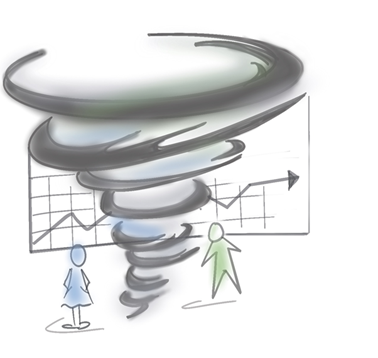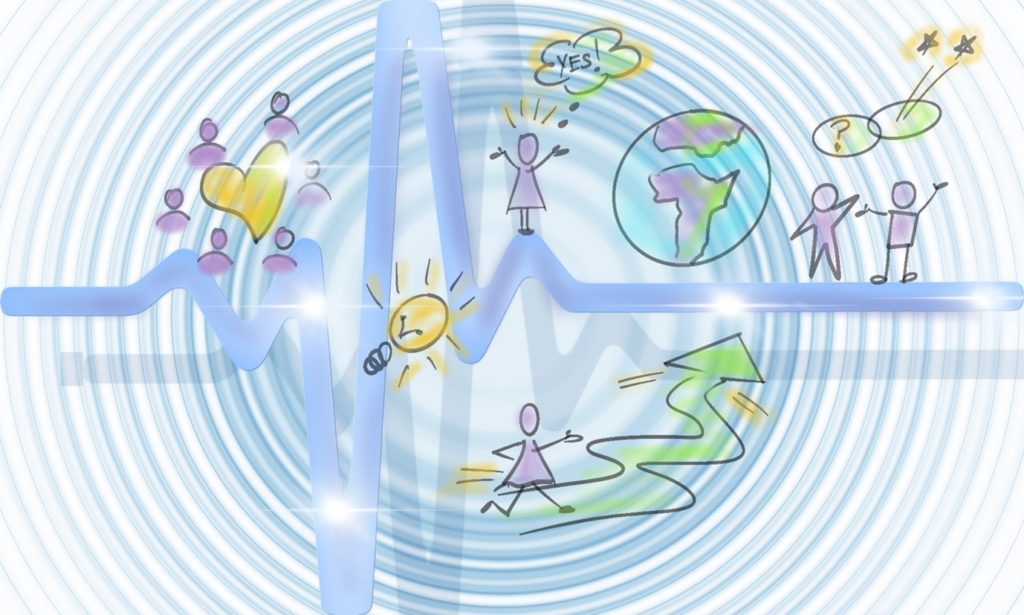I have learnt, through deep personal experience and many teachers and teachings, that unintegrated trauma symptoms can and does impact one’s ability to show up fully and effectively. I I have also experienced and observed how deeply entrenched, unhealthy organisational dynamics can perpetuate trauma symptoms at both a personal and collective level. Symptoms can be compounded by both dynamics within the person/s experiencing them as well as by dynamics within the environments in which we are located.
As a proponent of positive institutions, and a mental health professional, I am preoccupied with designing organisational environments that enable the strengthening of our capacities and resources in ways that promote resilience, effective thinking and creativity. How would life be different if, with conscious, adaptive leading, we were able to steward a level of resourcefulness and innovation in organisations that we perhaps have not yet seen? How would life be different if shaping healthy organisational cultures promoted the negotiation of trauma-related symptoms? I am deeply affected by these possibilities.
The recognition that creativity and innovation are core to organisational adaptability, survival and advancement, has given rise to a flourish of new offerings over the past few decades, including models, skills, courses and whole businesses. Most leaders I have engaged with over the past decade at least, have expressed a desire for greater innovation and for generating new organisational value through innovation, whether in the form of products and services or in the form of innovative technologies, processes and talent. As we know, many of us continue to struggle with turning this desire into a reality. One of the primary reasons for this is that innovation requires an enabling environment and many leaders simply do not cultivate this, either individually or collectively.
Years ago, I joined a firm in a senior leadership role. It had been ten years since I had occupied a permanent role in an organisation, having worked as a management consultant prior. I went in with experience, expertise and a sense of possibility having been offered the role after months of interviews and psychometric assessments that profiled me as a high skills match and high talent for the organisation. I also went in with unintegrated personal trauma.
Rosy lenses, a desire to make a name and a difference, a pleasing, somewhat fearful nature, integrous and politically naïve. I once heard this profile described as a sheep at a workshop on organisational politics. Pity I only learned about it years later as I pretty much got chewed up at this organisation. Exceedingly competitive, highly political, cut-throat cultural dynamics and relentless at demanding more and more from people. The words lamb and slaughter are rather clear to me suddenly 😳.

For the better part of a year, because of heightened stress responses resulting from my healed trauma symptoms,, and the intimidation of this leader, I was unable to stand up to what I rationally knew to be a misuse of power, and so mostly I froze or folded. For those of you that have not been introduced, the fear responses fight, flight and freeze, have a fourth sibling – her name is fold. In what were visceral, unconscious survival responses, I folded a lot – I complied – so that safety could be restored.
Most of the other people I worked with were a constant source of affirming feedback for the differences my contributions were making, and in fact many mentioned the caustic behaviour of said director which apparently was well known – and unchecked – throughout the organisation. But, my fear responses often overrode any positive feelings that came with the positive feedback. This is a core learning for us as organisational leaders and professionals: The fear response in a person with unintegrated trauma symptoms can, in many instances, override positive feelings if the organisational system is not set up to promote psychological and emotional wellbeing. The culture of low psychological and emotional safety that permeated parts of this organisation was expressed through aggressive, blaming and critical behaviours, language and practices. These experiences served to maintain an environment in which someone with an enhanced threat perception system, such as myself then, could easily be triggered into fear responses. As a result, my capacity to show up joyfully, effectively and innovatively, was too often diminished.
It took a while – a long while! – but I became deeply grateful to this director and the organisation over time. They catalysed my shift into toughening up and in the end, I stood up to both with a grounded integrity and sense of self achieved through many hours of psychotherapeutic unsheeping! The experience also catalysed what was then an interest in designing organisations that amplify health and resourcefulness, into a passionate life-work.

This organisation lost a rich source of positive contribution when I chose to leave, a key risk of unhealthy organisational cultures and leadership behaviours. In an environment that is not psychologically safe (a term coined by Amy Edmonson, author of The Fearless Organization), people are likely to not show up fully. This, if layered with unresolved trauma, could mean a complex dynamic of being unable to show up effectively because of both internal as well as external dynamics at play that perpetuate the trauma-related symptoms. What might this mean for organisational innovation and effectiveness?
My awareness and learnings regarding the negotiation of trauma in organisations have been developed primarily through my own journey with healing trauma symptoms, through studying working with clients and trauma in a mental health context, and from understanding the nature of human systems in organisations. In recent years in the work that I do with leaders and functional/professional groups, I have observed how people respond to my engaging from a place of connectedness and shared humanity; I observe how people want to work with me because they feel safe with me and I observe how quickly people think well, creatively and freely when they feel safe and seen. This is a second key learning; this is what we are aiming for as leaders and organisational professionals: Cultivating environments capable of strengthening resilience and resourcefulness. It is your responsibility to heal. It is my responsibility to show up in a way that is safe for you to do so. I think this is Ubuntu.
About the author:
Vasintha Pather is an Expressive Arts Therapist and systemic leadership coach based in Johannesburg. She has over 25 years of experience internationally as an organisational and systemic leadership development consultant partnering with leaders to design healthy, innovative organisational cultures. She specialises in creativity, archetypal wisdom and trauma-informed leading.
